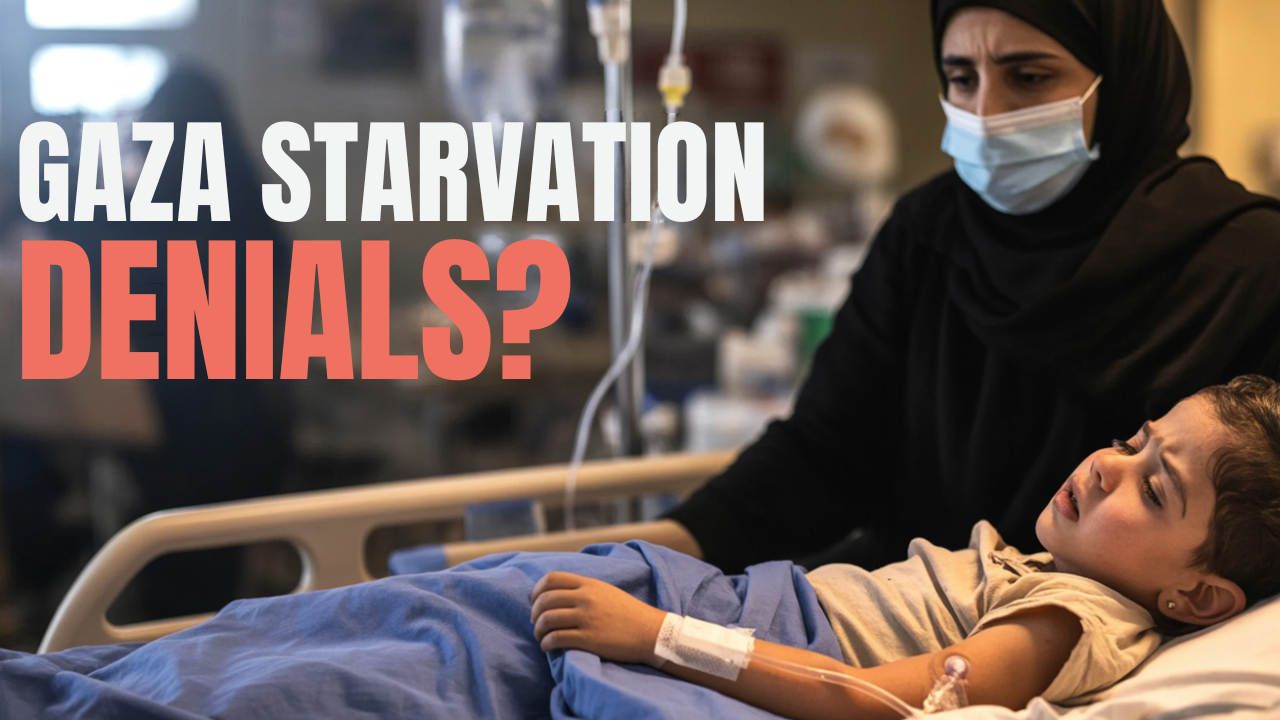Gaza Famine Worsens: Starvation Claims More Lives as Aid Blocked and Israel Rejects Blame
The humanitarian disaster in Gaza has reached catastrophic proportions, with international aid groups and UN agencies warning of a spiraling famine now claiming the lives of civilians—particularly children—at a rapidly accelerating pace. Amid growing outrage, the Israeli government continues to deny any responsibility for the crisis, blaming Hamas and logistical failures instead.
Worsening Data: Famine Taking Hold
The World Food Programme and UN’s IPC system have declared Gaza’s food insecurity at its most extreme level in large parts of the region. As of July 2025:
- Over 118 people—including at least 83 children—have died from starvation or severe malnutrition-related causes, according to Gaza’s Health Ministry.
- Aid organizations now estimate around 270,000 people—more than 10% of Gaza’s remaining population—are in IPC Phase 5, classified as catastrophic food insecurity. This is a rise from earlier estimates of 244,000.
- Over 33,000 children under five are suffering from acute malnutrition, with thousands at imminent risk of death if immediate nutritional intervention is not provided. UNICEF reports children are arriving at medical tents with distended stomachs, visible rib cages, and infections that thrive in weakened bodies.
“We’re not just dealing with hunger—we’re witnessing the collapse of childhood,” said Dr. Amira Solh, a pediatrician volunteering in Rafah. “Kids are wasting away before our eyes, and the world is watching in real-time.”
Aid Access Stymied Amid Rising Violence
Since March 2, Israel has enforced a full land, air, and sea blockade on Gaza, halting nearly all humanitarian traffic. Although officials claim that some convoys are allowed through, international monitors say most are stalled at crossings due to excessive inspection delays and tight restrictions on entry permits.
When aid does reach Gaza, the chaos of distribution can be just as lethal as its absence:
- More than 1,050 Palestinians have been killed attempting to reach aid distribution sites, primarily near areas controlled by the Gaza Humanitarian Foundation (GHF).
- Witnesses report gunfire breaking out regularly at distribution points, where thousands scramble for limited supplies. In one recent case near Gaza City, at least 27 people were shot, including two aid workers.
- Stampedes, exhaustion, and dehydration contribute to scores of additional injuries daily. Civilians describe being beaten, trampled, or targeted by armed contractors while simply trying to secure a loaf of bread.
“People are dying just for standing in a food line,” said Mahmoud Issa, a volunteer coordinator. “You either risk death to eat—or starve quietly.”
Health System in Ruins
Gaza’s health infrastructure has effectively collapsed. According to the World Health Organization:
- Only 12% of hospitals remain partially functional, and most lack electricity, fuel, or basic medical supplies.
- Maternal and neonatal care has vanished—with premature babies now dying due to the inability to operate incubators or provide basic postnatal care.
- MSF confirms an outbreak of severe gastroenteritis, dysentery, and skin infections across shelters and displacement zones—conditions worsened by lack of clean water.
At Nasser Hospital in Khan Younis, makeshift triage zones have been set up in corridors using cardboard and tape. Doctors are forced to amputate infected limbs without anesthesia, and the death toll is rising daily from preventable causes.
“This is not a healthcare crisis—it’s a systemic annihilation of medical capacity,” said WHO’s Dr. Lina Al-Khatib.
Israeli Government Denies Responsibility
Israel maintains its military campaign is focused solely on dismantling Hamas, and says it facilitates humanitarian access where possible:
“We’ve allowed aid into Gaza. If the people aren’t receiving it, blame Hamas—not the State of Israel,” said Israeli spokesperson Daniel Levy.
“No other military goes to such lengths to avoid civilian harm during wartime.”
Israeli officials point to Hamas’ theft and mismanagement of aid, claiming convoys are looted by militant groups. However, aid agencies—including the UN—insist that most delays and denials originate from the Israeli military bureaucracy, not local interference.
Legal and Ethical Pressure Mounts
Human rights groups argue the unfolding disaster is not a byproduct of war but a deliberate strategy of starvation, potentially constituting a war crime under international law.
- Article 54 of Protocol I of the Geneva Conventions prohibits the use of starvation of civilians as a method of warfare.
- The Rome Statute of the International Criminal Court (ICC) identifies intentional starvation as a prosecutable offense—even amid armed conflict.
- The ICC issued arrest warrants in late 2024 for Israeli and Hamas leaders, citing starvation tactics and collective punishment as part of the charges.
UN Secretary-General António Guterres has described the crisis as a “moral failure of epic proportions”, while France and several EU nations have demanded an independent investigation into whether Israel’s blockade strategy violates international humanitarian norms.
Global Reaction: Frustration and Inaction
While global condemnation has grown louder, meaningful intervention remains elusive:
- The United States continues to fund Israeli operations while calling for more “facilitated access.”
- Arab League nations have convened multiple emergency summits but failed to implement any binding action.
- Protests have erupted across Europe and Latin America, demanding sanctions and air-drops of food.
“It’s hard to imagine any other scenario where mass starvation and the killing of civilians at food lines wouldn’t trigger immediate global intervention,” said Kenneth Roth, former head of Human Rights Watch. “But politics, as always, delays justice.”
What Comes Next
Ceasefire talks continue behind closed doors, with U.S. envoy Steve Witkoff and Qatari officials pressing for a truce. But without a breakthrough—and rapid scaling of aid delivery—the UN warns the famine may soon claim thousands more lives.
“This isn’t a natural disaster. It’s a blockade-driven famine, happening in plain sight,” said a joint statement by over 100 NGOs.
Conclusion
The famine in Gaza is no longer an impending danger—it is reality. With a crippled health system, skyrocketing child malnutrition, and deadly aid chaos, the enclave is enduring a humanitarian catastrophe shaped by policy, not chance. While Israel denies responsibility, the mounting evidence of preventable suffering raises a haunting question: Is starvation now being used as a tool of war?







